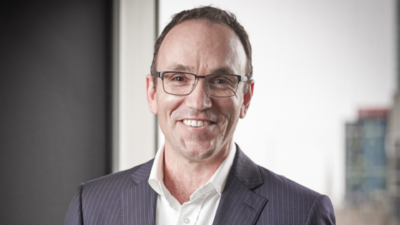Where the big global investors are putting their money
(Pictured: Grant Forster)
While global institutional investors have gone cold on emerging markets as the place to be for the next few years, there are some interesting nuances to emerge in the latest CREATE-Research report commissioned by Principal Global Investors.
Splitting investors into classes such as “buy and hold” or “opportunistic” and “true believers” or “non-believers” provides a clearer view of what is happening in the less-developed world. True believers have fallen from 38 per cent of investors surveyed to 20 per cent over the past two years of the annual survey and non-believers have risen from 21 per cent to 31 per cent.
However, looking at buy-and-hold investors versus opportunistic, shows the former have predictably increased their allocations to and optimism about equities over several years and reduced their interest in bonds, as in the major markets. But, opportunistic investors, which many Australian super funds are for at least a part of their portfolio, have gone from 15 per cent to 50 per cent in emerging markets bonds.
According to Grant Forster, the chief executive for Principal in Australia, there had been a lot of less-than-active money which had gone into emerging markets, such as those who liked the “China growth” story. “But it’s pretty clear now that you will need to take a view on individual markets, industries and stocks,” he said. “It’s about active management going forward.”
US-based Principal bought, in 2011, a majority stake in an active long/short emerging markets manager based in London, Finisterre Capital, for instance, which had been getting increased interest in those sort of very active strategies, Forster said.
The survey, now in its sixth year, is both quantitative and qualitative. It involves analyzing 704 survey responses and 110 one-on-one interviews. The respondents and interviewees represent the full gambit of pension funds, sovereign wealth funds, consultants and fund managers.
With the shift between true believers and non-believers have been shifts between degrees of optimism about various markets. For example 34 per cent of respondents say China will deliver real growth over the next three years, whereas only 15 per cent think Brazil will.
The author of the 48-page report, entitled “Not all Emerging Markets are Created Equal”, Professor Amin Rajan, said: “Marked volatility and concern about the political will to aggressively pursue a reform agenda has certainly made investors more wary about their previous buy-and-hold strategies… As a result, more investors view emerging markets as a tactical play.”
His view was that neither emerging nor developed markets would return to full health until some root causes of global weaknesses were addressed.
Asked which regions were most likely to offer the best returns over the next three years the respondents said, in order: USA (47 per cent), Frontier markets in Africa (45 per cent), the rest of Asia Pacific (41 per cent), Western Europe (34 per cent), China (34 per cent), Japan (26 per cent), Central and Eastern Europe (15 per cent), Brazil (15 per cent), the rest of Latin America (15 per cent), India (14 per cent) and Russia (8 per cent).










